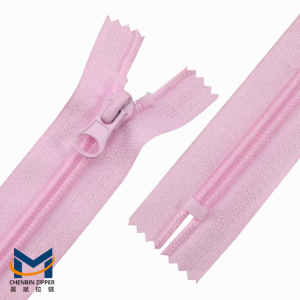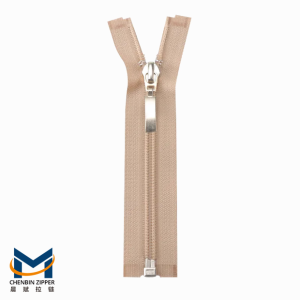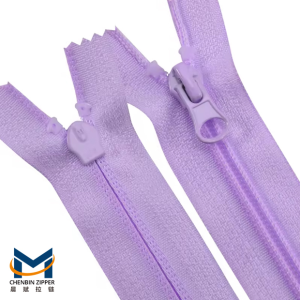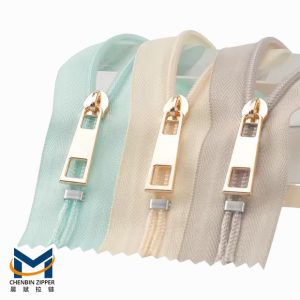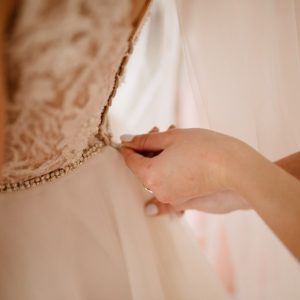Understanding Zippers: An Overview
Zippers play a role, as fastening tools in a range of items from clothes to outdoor gear. They are designed for convenience and strength serving both aesthetic purposes across products. It is important to know about the types of zippers like close-end and open–end zippers in order to pick the suitable one, for specific needs. The right choice of zipper not impacts how easy it is to use the product but also influences its look and durability.
Different Types of Zippers
End zippers have a stopper at one end to keep the slider in place, making them great for items that need a closure. Open-end zippers on the hand can fully separate since they lack a stopper at one end which is perfect for garments like jackets and bags where you need full access. Each type has its purposes and understanding their distinctions can help in making informed decisions, for various projects.
Importance of Choosing the Right Zipper
Choosing the type of zipper is crucial to ensure that the end product serves its intended purpose effectively. Opting for a close-end zipper in situations where an open-end one would be more practical might restrict ease of use and functionality. Conversely, using an open-end zipper in a setting that requires security and durability could result in issues. Hence being aware of the differences, between these types of zippers empowers designers and manufacturers to improve both the functionality and visual appeal of their designs.
What is a Close-End Zipper?
Definition and Description
A close-end zipper is known for its design with a stopper, at one end that keeps the slider from coming off. Typically this kind of special zipper can be made of nylon, metal or resin offering a range of strength and flexibility choices for uses. Close-end zippers are well known for their performance in situations, such as clothing, bags and different textile items.
Common Applications
Close-end zippers are commonly utilized in a variety of applications such as clothing items like skirts, dresses, and trousers, where a secure closure is essential. They are also used in bedding, handbags, and outdoor equipment like sleeping bags, where preventing any accidental opening is crucial. The versatility of close-end zippers extends to industries involving manufacturing garments, upholstery, or any product needing a reliable fastening solution.
Benefits of Using CHENBIN’s Close-End Zippers
CHENBIN’s close-end zippers provide additional advantages including high durability, smooth operation, and the option of customizing with specific designs. Made with premium materials, these zippers withstand wear and tear, ensuring long-lasting performance in clothes and other products. Additionally, CHENBIN offers a selection of finishes, lengths, and designs tailored to meet diverse project requirements effectively.
What is an Open-End Zipper?
Definition and Description
An open-end zipper, contrastingly, is designed without a fastening mechanism at the end allowing the slider to completely detach from the zipper tape. This design provides full accessibility ideal for items that need to be opened up completely, such as jackets or bags. Open-end zippers can be made from various materials like nylon, resin, or metal and can also come in different colors for aesthetic applications.
Common Applications
Open-end zippers find frequent use in outdoor and sportswear applications, such as jackets, as they allow wider openings for easy wear and removability. Backpack manufacturers often utilize open-end zippers for their compartments, enabling convenient access to gear. Other uses include tents and vespan for travel, where quick entry and exit are necessary.
Advantages of CHENBIN’s Open-End Zippers
CHENBIN’ s open-end zippers offer several benefits, including customizable lengths and high durability suitable for challenging environments. They are designed for seamless operation, ensuring smooth functionality whether used in high-energy activities or casual settings. Additionally, CHENBIN provides reliable performance standards, ensuring the open-end zippers endure stress while retaining their integrity.
With CHENBIN’s comprehensive range of zippers, both close-end and open-end options come with quality guarantees and customization possibilities that meet the rigorous demands of consumers and manufacturers alike. By understanding the features and applications of each type, users can make informed choices, leading to successful outcomes in their projects.
Comparing Close-End and Open-End Zippers
Structural Differences
The structural differences between close-end and open-end zippers play a crucial role in their functionality and application. The close-end zipper features a stopper at one end, effectively keeping the slider from being removed. This design allows for a secure closing mechanism that is particularly beneficial in applications where safety and stability are paramount. In contrast, open-end zippers are designed to separate completely, lacking a stopper at one end. This structural aspect facilitates full accessibility, making them ideal for garments and gear where users need to quickly and easily open or remove the zipper entirely.
Functional Difference
Durability
When it comes to durability, it is essential to consider the intended application of each zipper type. Close-end zippers are generally regarded as robust, thanks to the stopper that not only provides proper closure but also adds an extra layer of strength. With options available from manufacturers like CHENBIN Zipper, these zippers can come in robust materials such as metal or high-quality nylon, enhancing their longevity in everyday use. On the other hand, open-end zippers, while still durable, may experience stress on the mechanism due to frequent detachment and reattachment. Thus, selecting the right material for either type is critical to ensure they can withstand the pressures of their intended environments.
Accessibility
Accessibility is a significant distinguishing factor between close-end and open-end zippers. Close-end zippers provide a more secure closure, which can limit access slightly, making them ideal for areas where a totally secure fastening is necessary. For instance, close-end zippers are commonly used in clothing applications like dresses and trousers, where tight closures are a priority. In contrast, open-end zippers afford greater ease of use, permitting quick access, which is essential in items like backpacks or jackets. This immediate access feature plays an important role in outdoor gear where users might need to retrieve items swiftly.
Versatility
Both types of zippers possess unique advantages concerning their versatility. Close-end zippers are particularly well-suited for clothing and upholstery, where integrity and fastening security are vital. They can also be employed in specialty items, including sleeping bags and cushions, providing excellent structural support. Comparatively, open-end zippers are often favored in outdoor applications, such as tents and travel bags. They allow for broader functional uses due to their ability to open completely and are also popular in various styles of jackets and sportswear, contributing to a wide range of practical design scenarios.
Choosing the Right Zipper for Your Needs
Evaluating Application Requirements
Selecting the appropriate zipper necessitates a thorough evaluation of application requirements. Begin by assessing the nature of the product — whether it will be subject to frequent use, exposure to the elements, or if security is paramount. If you’re designing garments or sportswear, the choice between using a close-end zipper or an open-end zipper can significantly influence the user experience and functionality. Understanding the specific use cases will ensure that the zipper chosen aligns perfectly with the project’s objectives, thus enhancing the overall quality of the final product.
Considerations for Functionality
When deciding between close-end and open-end zippers, various factors must be considered based on functionality.
Clothing
In clothing, especially in fashion and everyday apparel, close-end zippers are often the go-to choice for tailored items like dresses, skirts, and fitted pants where a seamless look is essential. Their reliability ensures that the garments remain securely fastened without compromising on style. Conversely, open-end zippers are predominantly used in casual wear, such as jackets and hoodies, and are preferred for clothing with a more relaxed fit, where quick accessibility is beneficial. Both options from CHENBIN are designed with a focus on delivering quality performance tailored to fashion needs.
Luggage
In luggage design, the nature of the zipper can affect the overall durability and usability of the product. Close-end zippers lend themselves to securing compartments firmly, making them necessary for sections of suitcases where contents should remain tightly packed. On the other hand, open-end zippers are more commonly found in bags, offering convenience as users can open them entirely for easier packing and access during travel. By integrating high-quality components from CHENBIN, manufacturers can enhance both aesthetics and functionality, ensuring that luggage can withstand the rigors of travel effectively.
Outdoor Gear
Outdoor enthusiasts greatly benefit from the choice of zippers utilized in their gear. Close–end zippers are vital in items like sleeping bags that require a robust and secure closure for warmth and performance in challenging conditions. Open-end zippers shine in items like tents and backpacks, where quick and easy access is crucial while ensuring the content remains protected. CHENBIN Zipper’s offerings for outdoor applications, including waterproof options, ensure that users have reliable gear that withstands weather elements without sacrificing durability.
By meticulously assessing these criteria and employing quality zippers from a reputable supplier like CHENBIN, consumers can ensure they select the right components to meet their specific needs.
Innovations by CHENBIN in the Zipper Industry
State-of-the-Art Manufacturing Techniques
CHENBIN Zipper utilizes manufacturing methods to ensure quality and durability for all zipper types, including close-end zippers. Through automated processes CHENBIN maintains standards while increasing production efficiency. The company selects top notch materials like nylon, metal and resin, subjecting them to testing to meet durability requirements, for demanding uses. By incorporating computer controlled machinery they achieve stitching and assembly creating zippers that not function effectively but also enhance the visual appeal of the final product.
CHENBIN prioritizes sustainability in its manufacturing methods by adopting eco practices. This involves procuring materials from suppliers and reducing waste by streamlining production processes. Their dedication to innovation also includes integrating technologies such as laser cutting and digital printing, which improve the versatility and design options of zippers. This progressive mindset places CHENBIN Zipper at the forefront of the sector delivering top notch products that meet the market needs.
Customizable Solutions for Various Industries
CHENBIN understands the importance of tailoring fastening solutions to meet the needs of industries. They offer customized options for close-end zippers and other types of zippers allowing manufacturers to specify dimensions, colors and materials that best complement their products. For example, in the fashion sector, designers can request close-end zippers that seamlessly integrate with fabrics to ensure that the fastening element enhances rather than distracts from the garment’s aesthetics. Additionally, they can choose finishes, like matte or glossy textures to align with their brand identity.
CHENBIN specializes in gear meeting the need for weather resistant zippers with features like waterproof barriers and vibrant colors for visibility. These options are crucial for items like tents and sleeping bags that face conditions. Additionally, CHENBIN collaborates with clients in industries from sportswear to upholstery to provide customized zipper solutions that improve both functionality and appearance while ensuring consistency, across manufacturing methods.
Summary of Key Factors to Consider when Selecting a Zipper
When choosing a zipper, it’s important to consider factors to make sure you pick the one, for the job. One of the things to think about is the type of zipper—whether its an end or open-end zipper—each offering unique benefits based on how easy it is to use and its practicality. For items that need closures like clothing and bedding, a close-end zipper is usually better. On hand, if you need access especially in things, like jackets and bags an open-end zipper might be the way to go.
Furthermore the type of material used in making the zipper greatly influences how well it functions and how long it lasts. Zippers that are end and crafted from top notch nylon or metal tend to be more durable which makes them perfect, for items that undergo a lot of wear and tear. It’s important to think about the weight and flexibility of the zipper particularly when it comes to apparel or equipment meant for easy movement.
The dimensions and size of the zipper are aspects that need to be adjusted to suit the item. For example, a tailored short end zipper can guarantee a fit, in outfits like dresses or skirts elevating the look of the attire while ensuring usability. Designers should carefully consider all these elements, including the setting and purpose of the zipper to achieve outcomes in their designs. CHENBIN Zipper offers a selection of features enabling customers to make informed decisions that cater to both visual appeal and practical functionality in their products.

